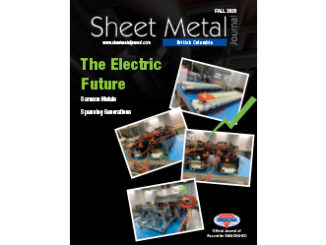By / Norm Grusnick, PEng ECCO Supply

At this time, I am in the middle of a heat wave and there are forest fires burning everywhere. It’s hard to think about and plan heating projects, but if designs are required, below is an outline for designing successful infrared projects.
There are five factors that must be addressed before developing an infrared heating solution in a commercial, industrial, agricultural, or residential application. Before you embark on your next project, consider the following points to ensure that your project starts on the right foot.
Detailed and accurate heat-loss calculations are required for all complete space heating applications. For estimating purposes only, a figure of 40 to 50 BTUHs per square foot is used in the preplanning stages. If only spot heating is required, a figure of 150 to 200 BTUHs per square foot might be used. These are only rules of thumb and should not replace a proper detailed heat-loss for building design purposes. An infrared heater’s stated BTUH input is used when matching infrared heaters to the total heat loss. Any of the major manufacturers’ representatives can assist in these detailed selections.
All units have a stated minimum clearance to combustibles, which represents a 90 degree net temperature rise. Note that some interior building products, such as plastics, have a low heat tolerance and require additional shielding from the heating effects of infrared. Refer to the provincial gas code for details and exceptions. In all infrared installations, signs should be posted advising building users of minimum clearances and product stacking heights. For more information about infrared heater safety, visit irsafetycouncil.org.
All gas burning appliances require a clean air source for proper combustion. Without this, combustion efficiency and equipment longevity will suffer, and this equates to higher operating costs. Tube-type heaters typically have the option of ducting combustion air from outside the contaminated space. Contaminates can range from solvent vapours and chemicals to sawdust and smoke.
Unvented or heaters discharging the products of combustion into the heated space must be interlocked with an exhaust fan. The interlock must be a device such as an air proving switch that can ensure that air flow exists. Typical air flow requirements are 4 CFM per 1000BTUH of heater input. Check with jurisdictional local gas code requirements.
Much like the sun, infrared heaters heat the objects that the infrared rays strike. These objects can be floors, machinery, stored products, metal railings and racking, people, and so on. These absorbers of infrared will, in turn, heat the surrounding area to a desired temperature. The thermostat setting in an infrared space heating application is usually three to five degrees lower than warm air due to radiant effect and no air movement.
A properly designed and installed system in areas with large air changes, such as loading docks, benefit twice. First, people working in the radiant pattern will be warmed even though air exchange is ongoing. Then when air infiltration is reduced, all radiant absorbers become emitters to aid in the heated space recovery. A good design using the specific design knowledge of manufacturers will lessen the effect of cold mass introduction into the space thereby reducing operating costs of the entire building. ■



